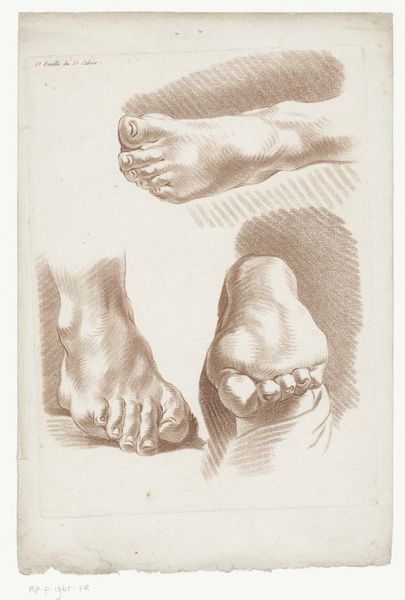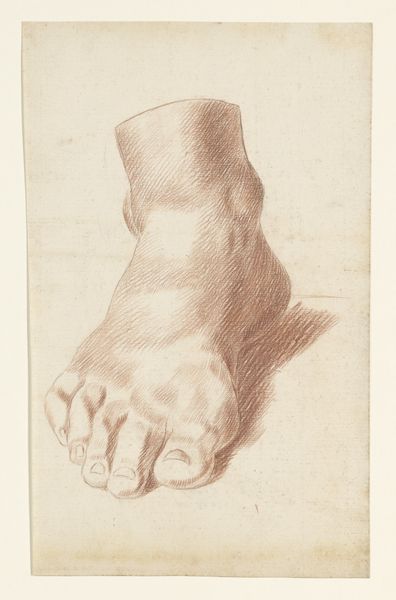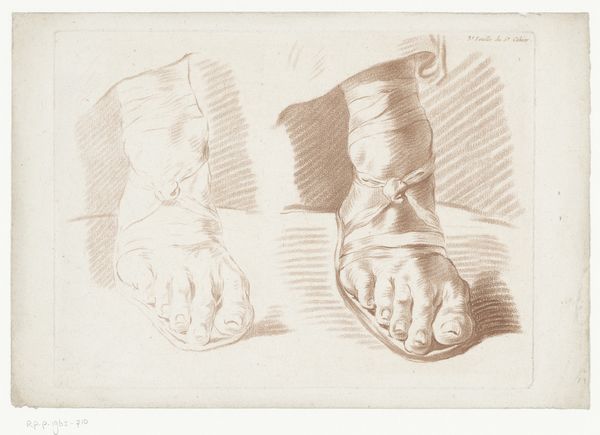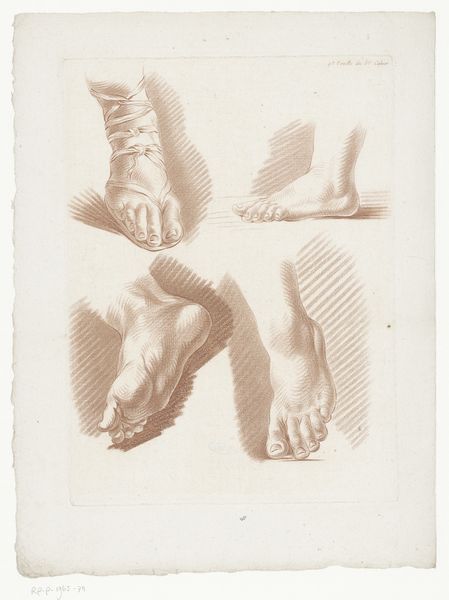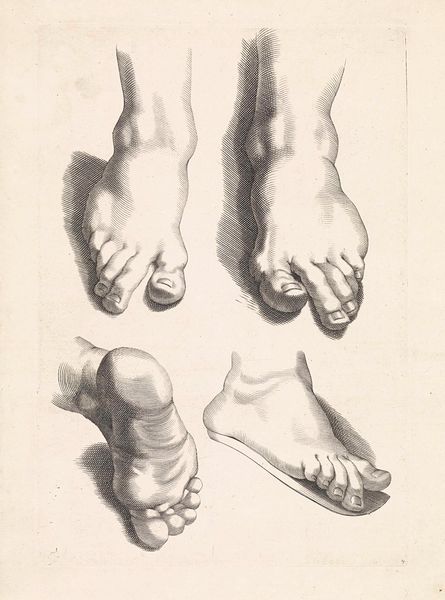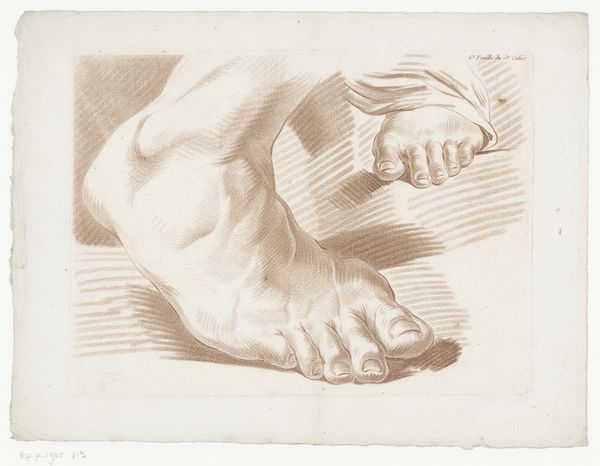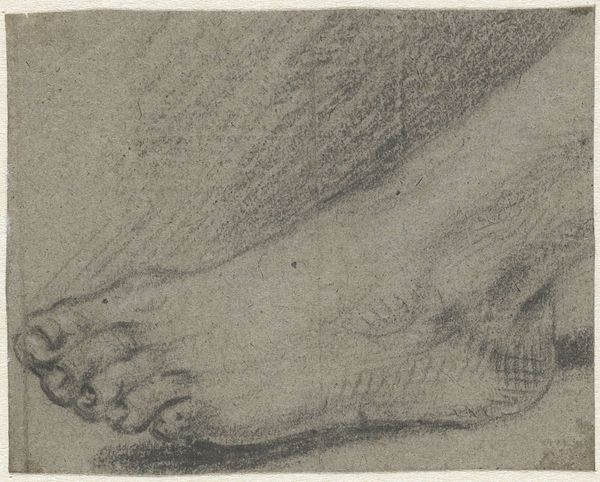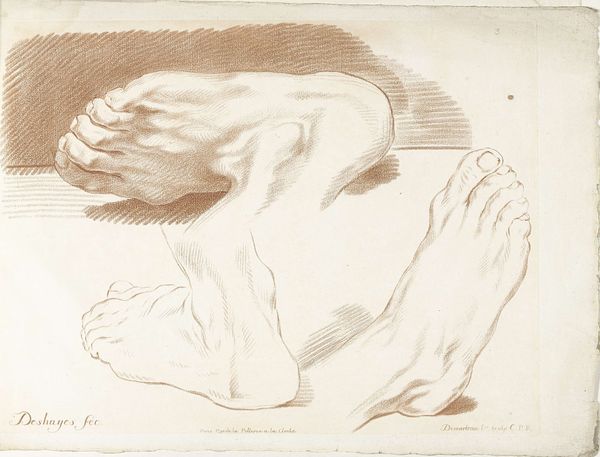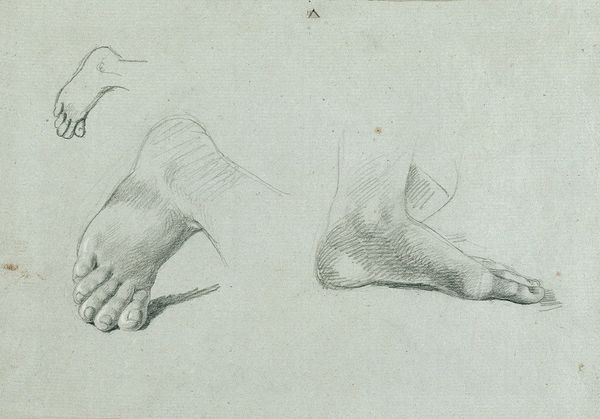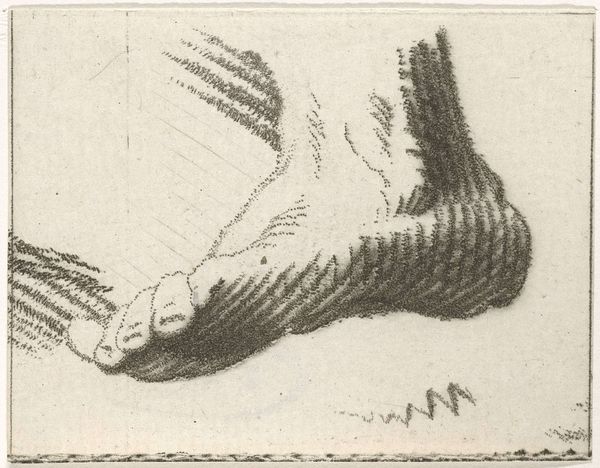
drawing, print, etching, pencil
#
pencil drawn
#
drawing
# print
#
etching
#
charcoal drawing
#
pencil drawing
#
pencil
#
academic-art
Dimensions: height 280 mm, width 208 mm
Copyright: Rijks Museum: Open Domain
Editor: We are looking at "Titelprent met twee voeten," an etching and pencil drawing by an anonymous artist around 1773. The drawing shows two studies of feet, and they're incredibly detailed, almost photographic. What strikes me most is the meticulous use of line and shadow; what stands out to you in terms of the visual language being used? Curator: Indeed. One notes immediately the deployment of line, its density modulated to describe volume. Observe how the engraver's burin mimics the subtle shifts in plane across the instep. Is it not fascinating how such simple means achieve such verisimilitude? Furthermore, consider the hatching technique employed to render shadow. What function might such rigorous application of technique serve beyond mere anatomical study? Editor: I suppose it's about capturing the form perfectly. Almost like a blueprint of a foot. But is it just about being anatomically correct? Is there some deeper level in these lines and shadows? Curator: Delve further. Consider the overall composition—two feet, one atop the other, yet oriented differently. Note the almost clinical precision in their depiction. Could this be interpreted as a purely formal exercise? Or might we speculate about an underlying system, a structure that transcends the representational? Perhaps the contrasting orientations, the mirrored forms, suggest a binary opposition—active versus passive, perhaps? Editor: That's really interesting. It hadn't occurred to me to think of it that way, as two halves making a whole, rather than just separate studies. Now that you mention it, they really are balanced like two sides of the same coin. Curator: Precisely. The dialogue established between these two renderings yields a meaning richer than simple reproduction. It's the considered arrangement and masterful deployment of formal elements that elevates this work beyond mere anatomical illustration. Editor: That makes sense! Looking closely, I can see the careful balance between form and negative space, creating a more complex meaning. It's not just a drawing of feet; it’s an exploration of form. Curator: Precisely. Our consideration of the artwork, in turn, transforms our own vision.
Comments
No comments
Be the first to comment and join the conversation on the ultimate creative platform.


